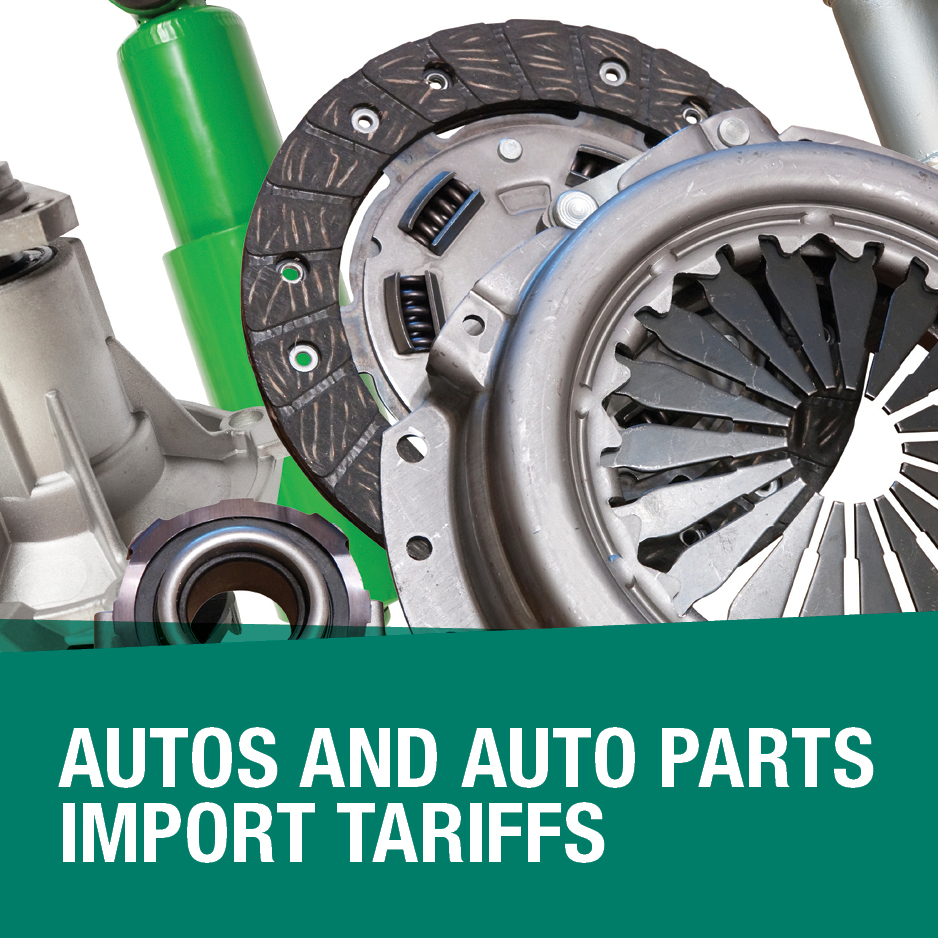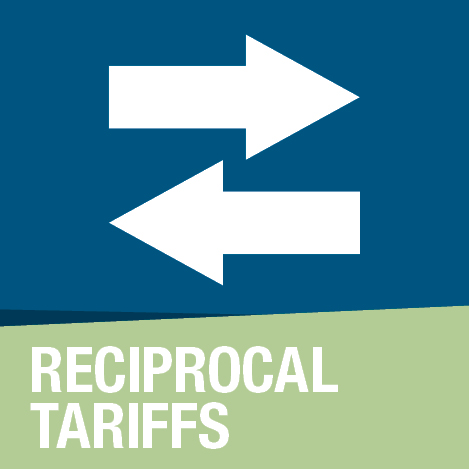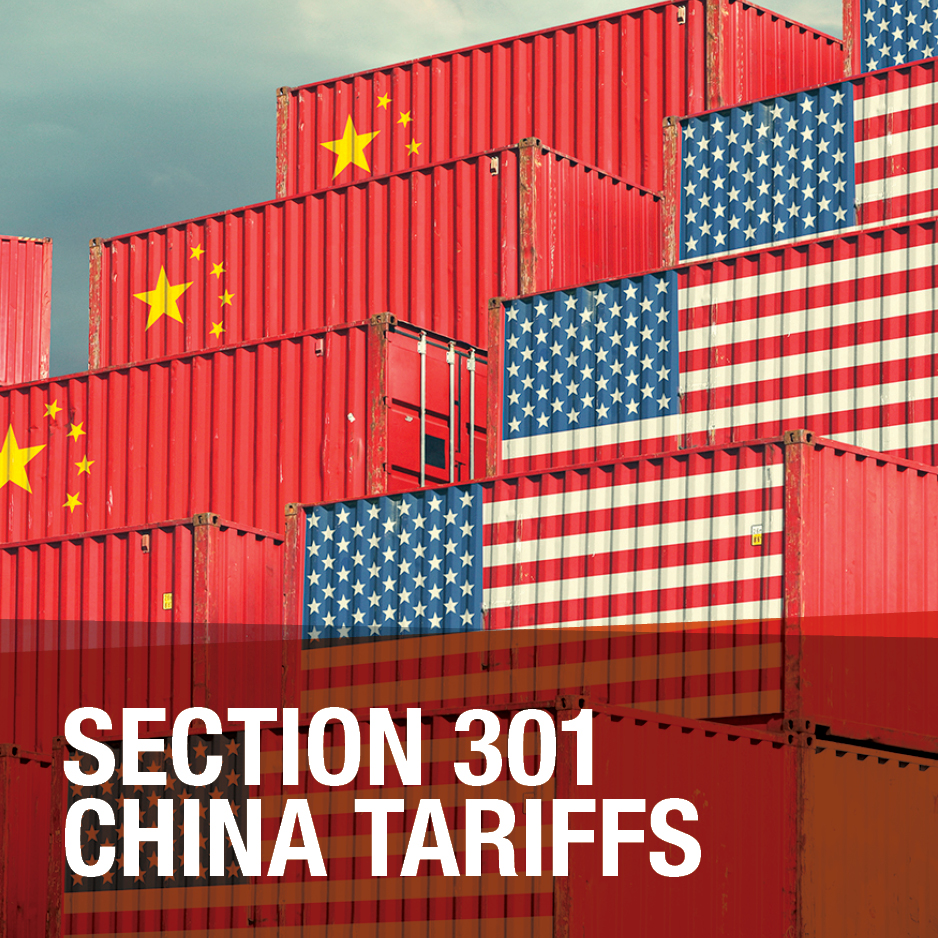
Tariffs and Trade
Tariffs & Trade Impacting the Automotive Aftermarket Latest News
The Auto Care Association is actively monitoring this evolving situation and will provide updates as new information emerges. Check this page regularly for the latest developments.
Member-only Resource
Auto Care Tariff Calculator
Use our tariff calculator to help you identify which recent U.S. tariffs may apply cumulatively to your products.
See CalculatorHas your business been impacted by Tariffs?
We welcome your feedback to help us better understand and assess the impact of these tariffs on our industry and businesses. Please share with us by contacting Angela Chiang, director, international affairs, at angela.chiang@autocare.org.
Share Your Impact StoryCurrent Status
On March 26, 2025, President Trump issued a proclamation imposing a 25% tariff on imports of automobiles (effective April 3, 2025) and certain automobile parts (tentatively effective May 3, 2025).
Current Status
Effective March 7, 2025, imports from Canada and Mexico that meet USMCA rules of origin are exempt from the additional IEEPA duties. Imports that do not satisfy USMCA rules of origin are subject to a 25% tariff rate. Energy products from Canada and potash from Mexico and Canada are subject to a reduced tariff rate of 10%.
Effective March 4, 2025, imports from China are subject to a 20% tariff rate, an increase from a 10% tariff rate that went into effect on Feb. 4, 2025.
Note that many products imported from Canada and Mexico were already duty-free under MFN rates, making USMCA declarations unnecessary. Under the new policy, importers must document and ensure USMCA compliance (if eligible) to be exempt from the IEEPA tariffs. Otherwise, the 25% IEEPA tariff would apply.
Current Status
On April 1, 2025, President Trump issued an Executive Order under the International Emergency Economic Powers Act (IEEPA) to establish a 10% baseline tariff and country-specific reciprocal tariffs on imported goods.
On April 9, 2025, President Trump issued an order delaying the country-specific reciprocal tariffs effective April 10, 2025. The country-specific reciprocal tariffs originally went into effect on April 9, 2025 and will be suspended for 90-days, after which the country-specific rates in Annex I will apply.
The baseline 10% tariff remains in effect for all products from all countries during this time, except for products that are covered by the exemptions listed in the original order (see below).
However, the 90-day pause does not apply to China due to their retaliatory tariffs on U.S.-origin goods. China's reciprocal tariff rate has increased from the original 34% to 84% and now to 125%. This applies to goods entered for consumption, or withdrawn from warehouse for consumption, on or after 12:01 a.m. EDT on April 10, 2025.
Current Status
As of March 12, 2025, the expanded Section 232 tariffs on steel and aluminum are now in effect. All imports of steel and aluminum are subject to a 25% tariff, and previous country exemptions and tariff-rate quotas have been eliminated.
The tariffs also apply to certain derivative products based on the steel and aluminum content. The product exclusion process has been terminated, meaning previously approved exclusions are no longer valid.
Current Status
The Section 301 China tariffs implemented in 2018-2019 remain in effect, with most tariff rates unchanged since their initial implementation. While some product exclusions have been extended, the majority have expired, except for a limited set scheduled to expire on May 31, 2025.
Additionally, a new 20% tariff on imports from China was imposed under IEEPA, taking effect on Mar. 4, 2025.
Trade and Tariffs Update: April 21, 2025
Recent tariff measures now require supply chains to maintain a higher level of data granularity, including detailed information on inputs and production. Importers must be prepared to document and support value content declarations with a level of specificity that may not have been previously required.
We encourage members to consult with their customs broker or trade counsel for further guidance and to ensure compliance with all applicable tariff programs.
Lawsuits Challenging the Trump Administration’s Tariff Authority
Four lawsuits have been filed in federal courts across the country challenging the legality of the Trump administration’s use of the International Emergency Economic Powers Act (IEEPA) to impose recent tariffs, including the April 2 reciprocal tariffs and the IEEPA-fentanyl tariffs on Canada, Mexico and China.
Virginia Small Businesses (V.O.S. Selections): The Liberty Justice Center filed a lawsuit at the U.S. Court of International Trade on behalf of five Virginia small businesses challenging the April 2 reciprocal tariffs. The complaint argues that IEEPA does not authorize across-the-board tariffs and that the administration’s justification fails to meet the legal threshold of an “unusual and extraordinary threat.”
California (State of California and Governor Newsom): The State of California filed a lawsuit in the U.S. District Court for the Northern District of California challenging tariffs imposed under IEEPA on Canada, Mexico, and China, as well as the April 2 reciprocal tariffs. The complaint argues the actions violate the separation of powers and that IEEPA does not permit the president to impose tariffs without congressional approval.
Montana (Blackfeet Nation Members): Two members of the Blackfeet Nation filed a lawsuit in the U.S. District Court for the District of Montana alleging that President Trump’s IEEPA-based tariffs are an unconstitutional delegation of legislative authority. They also claim violations of procedural due process and assert the tariff orders are impermissibly vague.
Florida (Emily Ley Paper dba Simplified): The New Civil Liberties Alliance filed a lawsuit in the U.S. District Court for the Northern District of Florida on behalf of a Florida-based stationery importer, Simplified. The suit seeks to block enforcement of the IEEPA tariffs on China, arguing they are unlawful, unconstitutional, and improperly amended the Harmonized Tariff Schedule.
USTR Finalizes Port Fees on Chinese-operated and Chinese-built Ships
On April 17, 2025, the Office of the United States Trade Representative (USTR) announced final actions under the Section 301 investigation targeting China’s maritime logistics and shipbuilding sectors. The measures, which reflect significant changes from the initial proposal released in March, introduce a phased and more narrowly tailored fee structure on Chinese-built vessels and operators.
USTR made significant changes from the initial proposed actions in response to public comments and industry concerns. Fees will now apply per U.S. voyage, not per port call, and are capped at a maximum of five times per vessel each year. The fee structure has shifted from a flat rate to one based on vessel net tonnage or container volume, with gradual phase-in.
China Warns Against Trade Deals as U.S. Negotiations Advance
Several countries have begun engaging in bilateral discussions with the United States following the temporary 90-day suspension of country-specific reciprocal tariffs announced on April 2. Nations such as Japan and India have reportedly initiated talks to address trade imbalances and explore opportunities for tariff relief during the pause period.
On April 21, China’s Ministry of Commerce issued a statement cautioning governments not to enter into trade agreements that undermine China’s economic interests. The Ministry of Commerce stated that any such agreements would prompt reciprocal countermeasures, emphasizing China's commitment to safeguarding its rights and interests.
New Section 232 Investigations Initiated
On April 15, President Donald Trump directed the Department of Commerce to initiate investigations under Section 232 of the Trade Expansion Act into imports of semiconductors, critical minerals, and their derivatives. These investigations aim to assess whether these imports pose a threat to national security, potentially leading to new tariffs or trade restrictions.
Semiconductors Federal Register Notice
Critical Minerals Executive Order
Clarification on Tariffs Imposed on Chinese Imports
In a recent fact sheet shared by the Trump administration on the White House’s website, it was stated that “China faces up to a 245% tariff on imports to the United States as a result of its retaliatory actions.”
This is to clarify that there are no new tariffs beyond the existing IEEPA-fentanyl tariffs at 20% and the China reciprocal tariffs at 125%. The 245% total does not reflect new actions; it reflects the cumulative maximum charges already in place, including a 100% tariff on Chinese syringes.
CBP Further Clarifies Products on Auto Parts List are not Subject to Reciprocal Tariffs
We previously shared that U.S. Customs and Border Protection (CBP) updated their FAQ page to confirm that products on the auto parts list are not subject to the reciprocal tariffs. CBP has since updated its guidance to further clarify that, even though the 25% auto parts Section 232 tariffs do not take effect until May 3, 2025, those products are and have been exempt from the reciprocal tariffs since April 5, 2025, under HTS heading 9903.01.33.
If you previously paid reciprocal tariffs on auto parts subject to the Section 232 tariffs, please consult your customs broker about submitting a Post Summary Correction (PSC).
Latest News
 On Your Behalf
On Your Behalf Press Release
Auto Care Association Submits Comments, Economic Study to USTR, Warns Proposed Shipbuilding Remedies Will Harm American Consumers, Businesses
 On Your Behalf
On Your Behalf Auto Care Association Joins Coalition Letter in Opposition of USTR's Shipping Remedies Proposal
 Press Release
Press Release Auto Care Association Responds to Trump Administration’s 25% Tariff on Steel, Aluminum Imports








Leave a comment